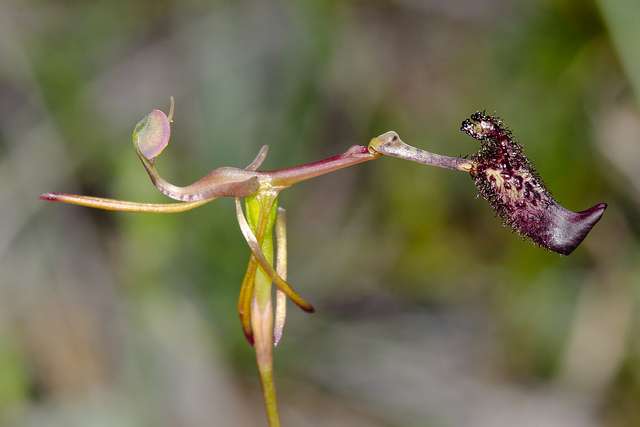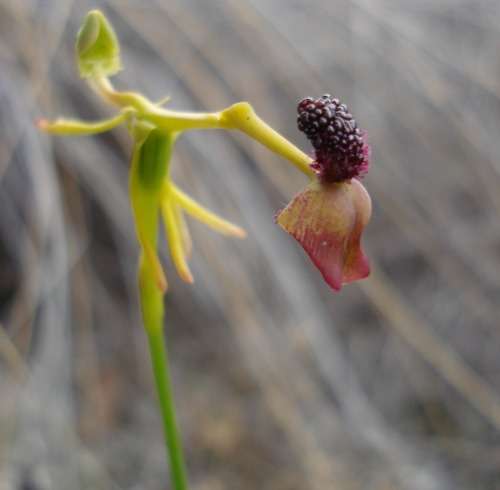Orchid seductress ropes in unsuspecting males

A single population of a rare hammer orchid species known as a master of sexual deception appears to have recently evolved to seduce a new and wider-spread species of impressionable male wasps.
The kneeling hammer orchid (Drakaea concolor) emits chemicals that mimic the sex pheromones produced by female wasps—a ruse to trick unsuspecting male wasps of a particular species into visiting its flowers in an attempt to get lucky.
In the process the wasp unwittingly picks up pollen which it later transfers to other flowers for pollination.
Australian National University post doctoral research fellow Ryan Phillips studied populations of the orchid in different WA locations including in the Mid West to understand which species of wasp they attract for pollination.
By moving orchid flowers from different geographical locations to wasp-rich sites he could work out which orchid populations attracted which type of wasp.
The task was made simpler by the extremely strong lure of the orchid's pheromone-mimicking chemical—an attractant which entices wasps within minutes, while some enthusiastic studs were sometimes attracted within mere seconds.
"In one case I was sitting at some traffic lights in Bunbury with another species of hammer orchid on the passenger seat and had a wasp fly in the window and start trying to make love to the flower!" Dr Phillip says.
Dr Phillip's study revealed that the orchid from a Kalbarri population attracted a rare and poorly known wasp species.

Should the rare wasp populations flounder, so too would the orchid species.
However, a small population of the orchid near Northampton attracted both this rare species and a second far more common wasp species, which was previously unknown to science.
While the widespread wasp species was also present in Kalbarri, the orchids there failed to attract it.
This begged the question, had the Northampton population evolved to attract the more common wasp species?
"The expectation with plants with geographic variation is that they'll adapt to attract the most effective pollinator—usually the most common one," Dr Phillips says.
"While this happened at Northampton, in Kalbarri we had the opposite situation—the rare orchid population is attracting the rare wasp species."
Dr Phillips says such a situation suggests the Northampton population has experienced gene mutation which has enabled it to produce a chemical that also attracts a more reliable pollinator.
The fact that the Kalbarri population has not yet developed in such a way suggests the Northampton population adaptation has occurred in relatively recent evolutionary times.
Provided by Science Network WA



















